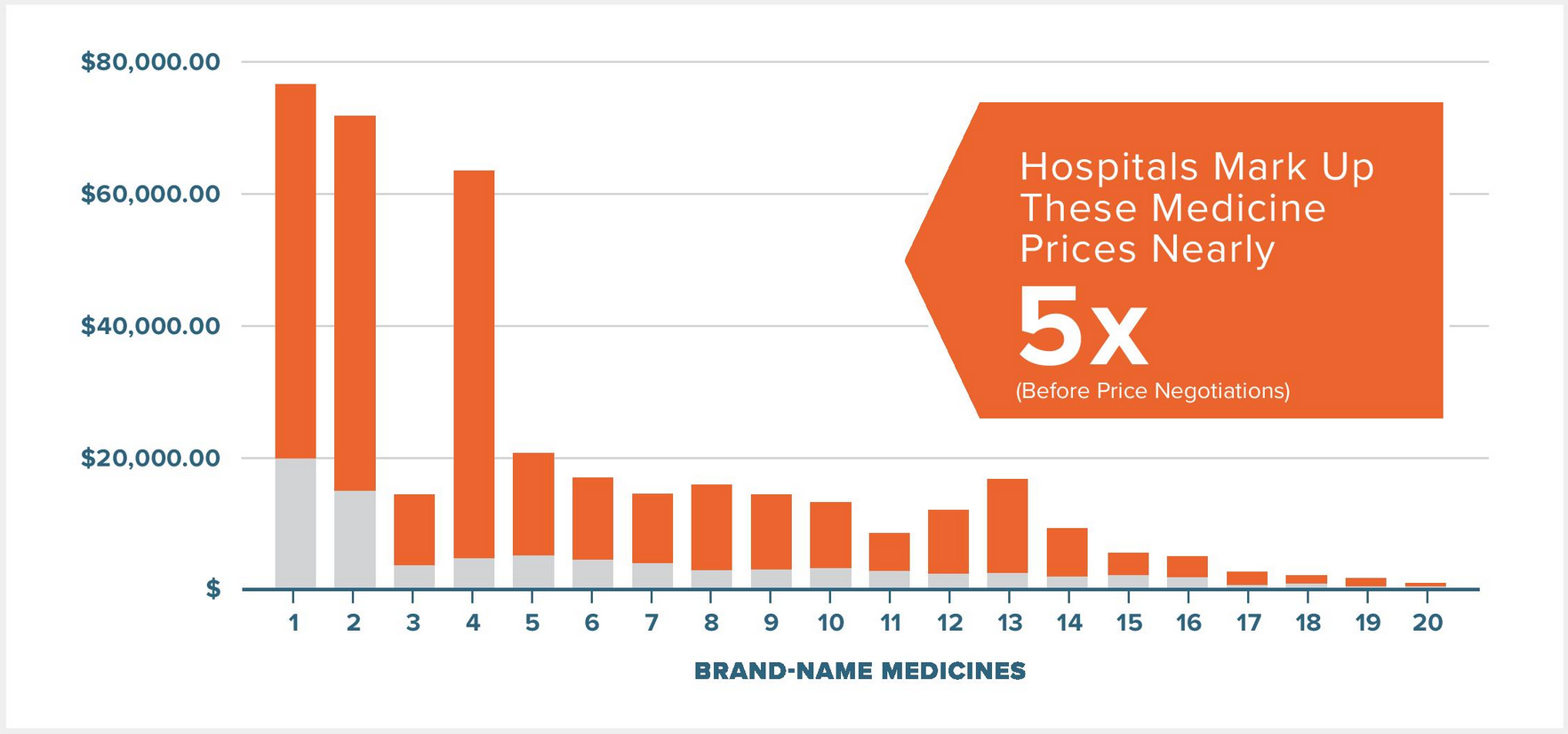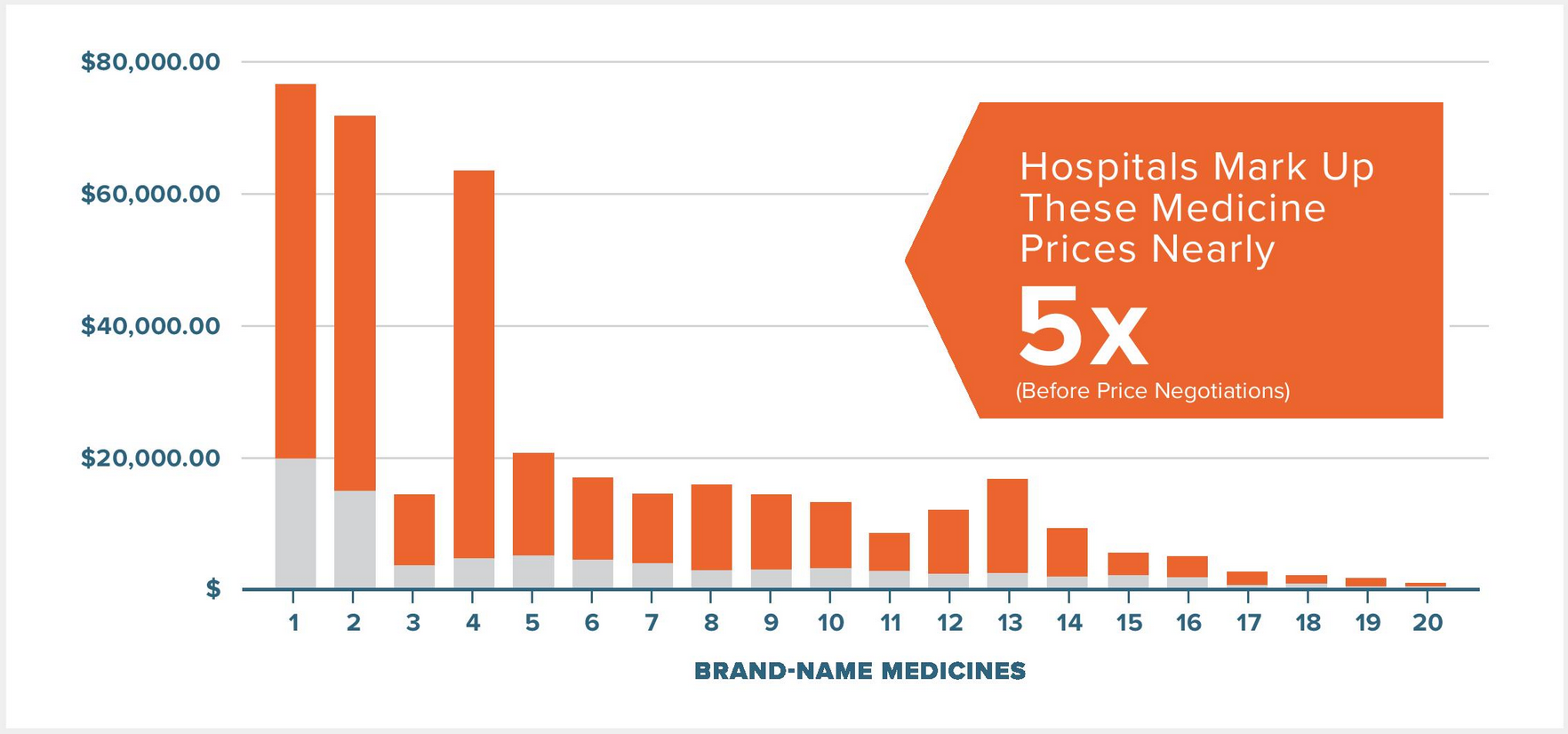Hospitals mark up medicine prices, on average, nearly 500 percent, according to a new analysis from the Moran Company that was commissioned by the Pharmaceutical Research and Manufacturers of America (PhRMA). The analysis of 20 medicines also found the amount hospitals receive after negotiations with commercial payers is, on average, more than 250 percent what they paid to acquire the medicine. This means a hospital is paid two and a half times what the biopharmaceutical company, who brought the medicine to market, receives. This hidden threat to affordability is a driver of higher cost sharing and premiums for patients across the country.

Insurers pay for medicines administered in hospital outpatient settings differently than when they are purchased at a pharmacy. For example, many cancer treatments are provided in a hospital facility where the hospital purchases the medicine directly and is then reimbursed by the patient’s insurer – often with a steep markup. How much a hospital can charge for a medicine and what they get paid varies widely based on local hospital and insurer market dynamics. When hospitals gain market power through consolidation, they are able to demand higher reimbursement from commercial payers.
The Moran analysis evaluated 20 different physician-administered medicines across a range of therapeutic areas, such as cancer, autoimmune disorders and arthritis, and found that hospitals are significantly marking up the prices of these medicines. Even after negotiations with commercial payers, hospitals are often paid tens of thousands of dollars more than the amount the hospital paid to buy the medicine.
Importantly, the Moran findings are a conservative estimate of hospital markups and margins for these medicines reimbursed by commercial payers because the analysis did not take into account the impact of the 340B program. On average, 340B prices are significantly lower than the average sales price (ASP) – about 22.5 percent below ASP, according to the Medicare Payment Advisory Commission (MedPAC) – which is why medicines purchased by hospitals at 340B prices could have even larger margins.

While hospital markups lead to higher costs for patients, employers and payers, these markups are often overlooked in conversations about medicine costs. As the provider market continues to become more concentrated and the number of medicines being administered in hospital-owned facilities is growing, the amount hospitals mark up medicine prices needs greater scrutiny.
We welcome conversations about costs, but we need to take into account the entire biopharmaceutical supply chain, including the impact hospital markups have on access and affordability of medicines.
View the full analysis here. View the analysis infographics here. Learn more at www.LetsTalkAboutCost.org.





